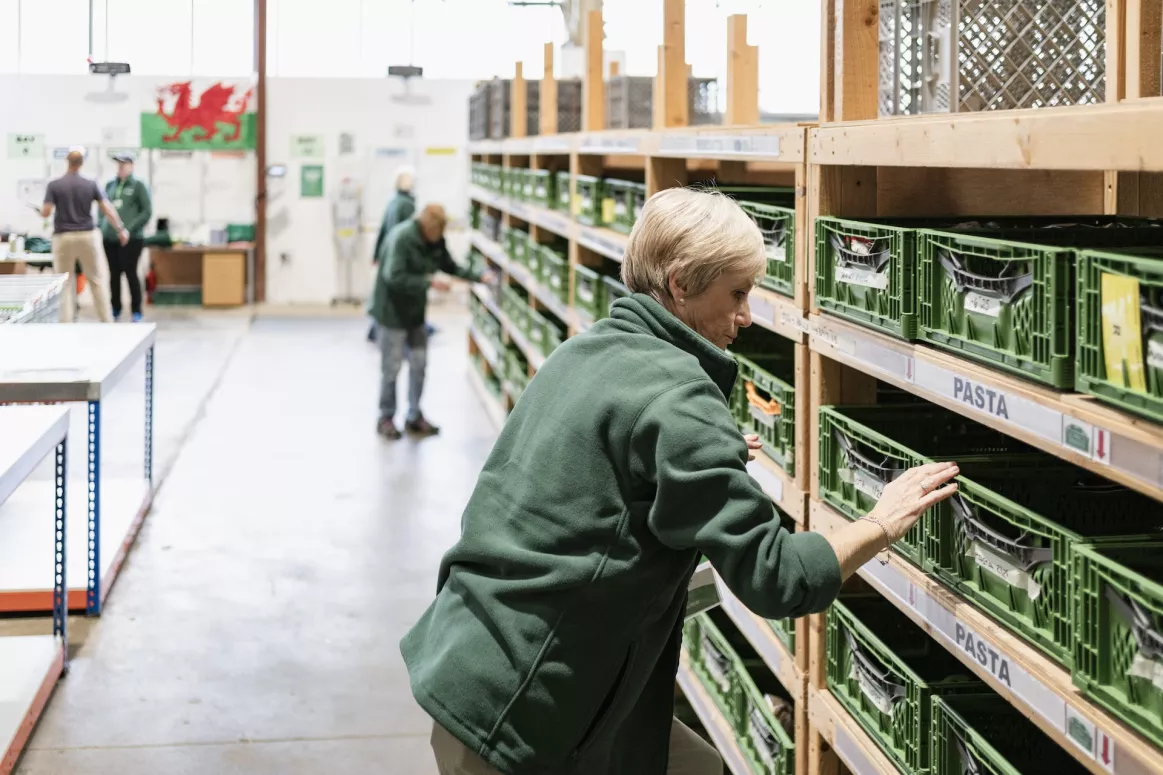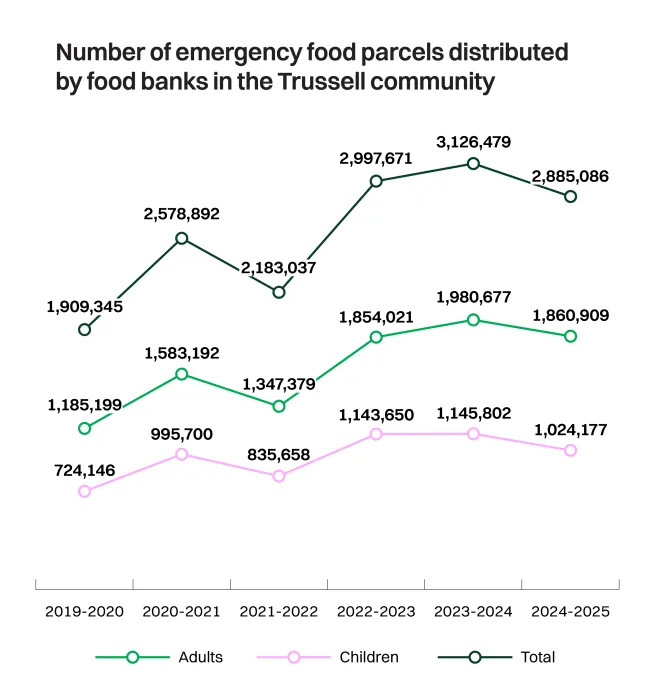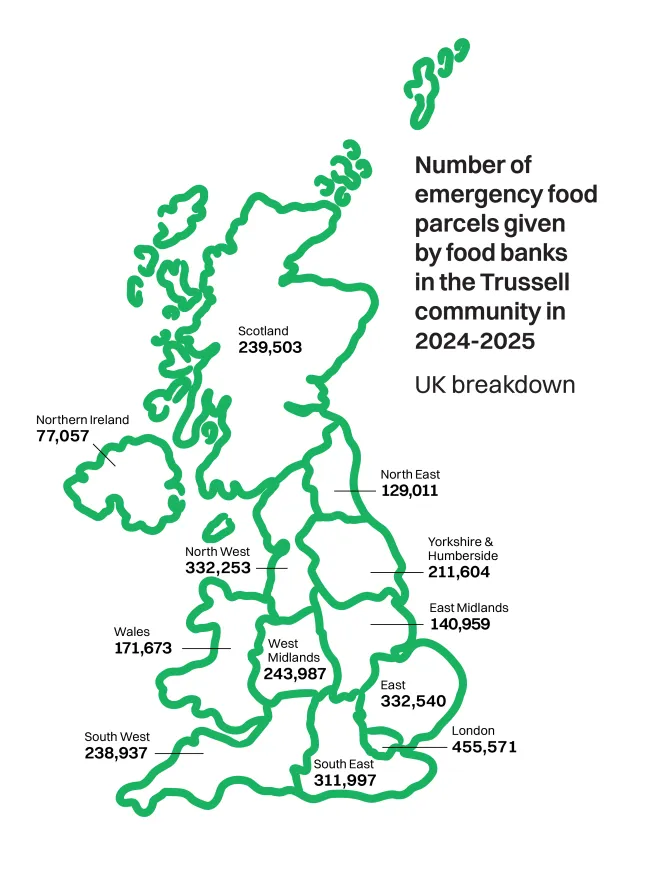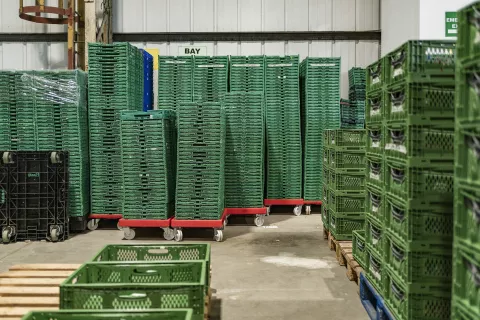End of year food bank stats
Food banks in the Trussell community distributed 2.9 million emergency food parcels in the past 12 months – equivalent to one parcel every 11 seconds.

Food banks in the Trussell community continue to provide extremely high levels of emergency food to people facing hunger in the UK. Food banks are witnessing a deepening and more prolonged level of severe hardship.
What we’re seeing is that situations are more critical now than ever. People are living in constant poverty. People are staying with us longer because they have no other option.

Factsheets and data
Read our factsheets for a detailed breakdown of what this year’s statistics are telling us at a UK level and the findings for Northern Ireland, Scotland, and Wales.
Parcels by postcode
Find out how many emergency food parcels were given out in your local area, and share the numbers with your MP.

What do these stats show?
Every year we release statistics about the number of emergency food parcels food banks in our community have provided to people. We release figures for the first six months of the financial year in November (‘Mid Year Stats’), and for the full financial year in May. The latest release covers 1 April 2024 to 31 March 2025.
Our headline parcel numbers are a measure of volume rather than unique users. For example, if a family of three were referred to a food bank twice in one year, this would count as six parcels on our data collection system because it would reflect six instances of a supply going to someone in the household. However, if a family of three were only referred to a food bank once, this would count as three parcels.
Figures from Trussell cannot be used to fully describe the scale of food bank use across the UK, because our figures do not cover the hundreds of independent food aid providers and community groups also providing emergency food, which have increased in number through the pandemic. There are more than 1,400 food bank centres in Trussell’s UK-wide community. For more on this, see our factsheets.
Further reading
To read more about the drivers of food bank need and who is most at risk, read our research on Hunger in the UK. To find out more about how severe hardship is driving up costs for individuals and to the economy and public finances, read Cost of Hunger and Hardship.

